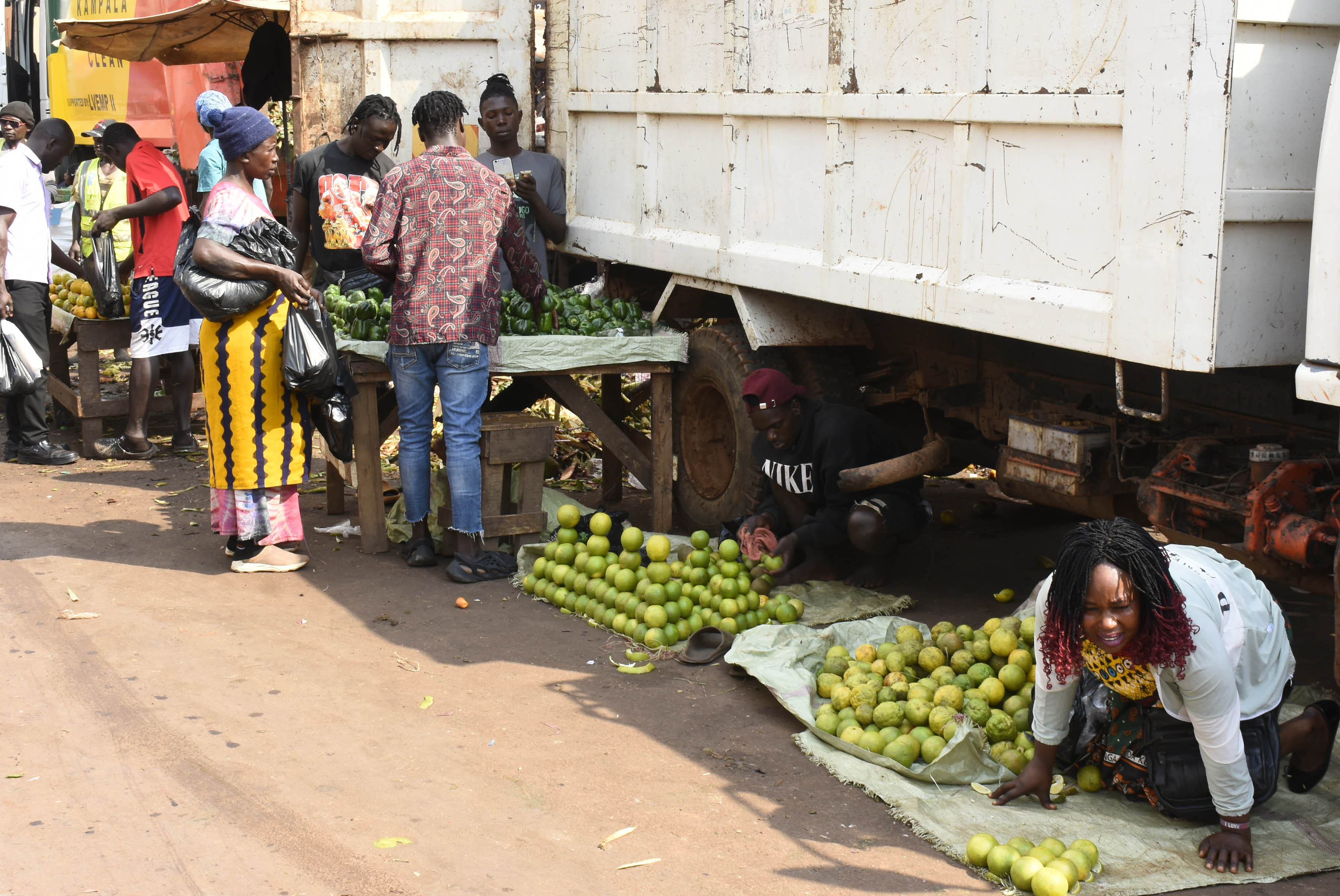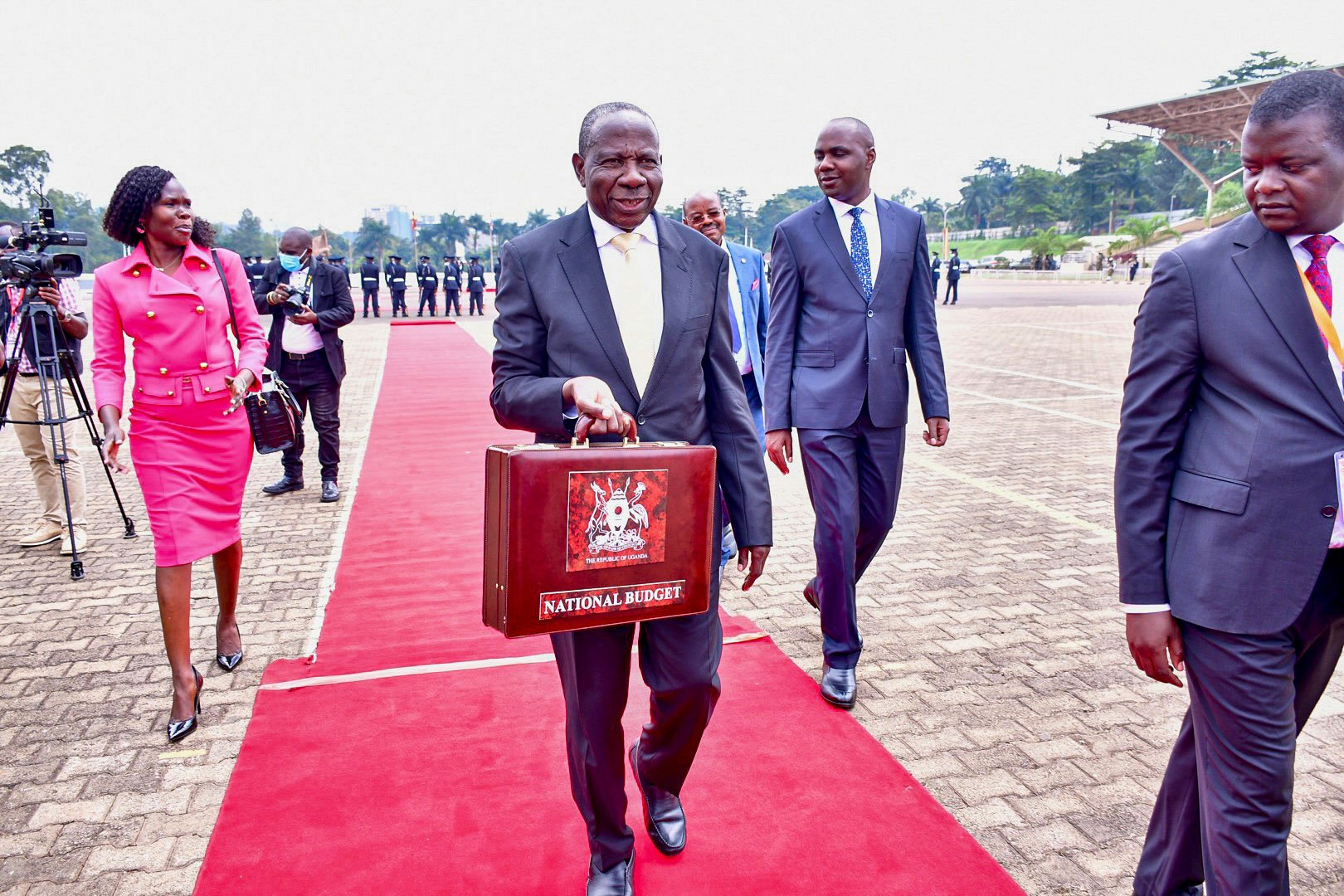Agro-industrialisation budget boosted

Traders sell fruits at Nakasero Market in Kampala City on June 15, 2023. PHOTO/ ISAAC KASAMANI
What you need to know:
- In 2021/22, attention was focused on projects aimed at increasing commercialisation and competitiveness in agricultural production and agro-processing.
Uganda’s agro-industrialisation programme has received a boost with government increasing allocations from the Shs1.449 trillion last year to Shs1.787 trillion in the 2023/24 budget read yesterday by Finance minister Matia Kasaija.
The increase means the sector will account for 3.37 percent of the total Shs52.7 budget.
Following government’s shift to programme-based-budgeting in 2021, agriculture was allocated a cumulative total of Shs3.1 trillion; Shs1.67 trillion in 2021/22 and Shs1.453 trillion in 2022/23.
In 2021/22, attention was focused on projects aimed at increasing commercialisation and competitiveness in agricultural production and agro-processing.
These included; developing commodity value chains between farmers and the market; building regional warehouse storage capacities; providing affordable long-term agricultural financing and insurance and development of infrastructure to enable the private sector take advantage of export market opportunities.
Others were construction of six milk collecting centres, 12 food processing plants and 18 value addition facilities; operationalisation of 20 zonal industrial hubs for skilling, wealth creation and value addition; improving the quality of agricultural inputs; improving access to water for production and the re-capitalisation of Uganda Development Bank and Uganda Development Corporation so as to facilitate financing for agriculture-based industry.
Full achievement of these objectives has, however, been constrained by slow disbursement of funds to the sector which employs the largest percentage of Uganda’s population.
Private sector view
“In FY2022/23, only 45.72 percent of the programme’s budget was released which meant that most of the activities could not be completed due to insufficient funds and this poses a threat to the achievement of the NDP III,” Ms Agnes Kirabo, the executive director of the Food Rights Alliance, said.
Ms Kirabo said the planned focus on agro-industrialisation should ensure access to credible inputs like seeds, acaricides and pesticides.
“Let us stop looking at the increased figure. We should dig deep. Each year the population grows at 3.2 percent, meaning those are more mouths to feed. Does the increment cater for that?... Countries like our neighbour in Kenya know their staple food is maize flour and in their budget they already know what amount of grain they will import which is not the case with our budget,” she said.
Ms Kirabo was also concerned about the programme’s commitment to research, inputs, extension services, quality and management of pests and diseases.
“You hoodwink people by increasing the budget yet you remove the extension and production grant at the local government. This means farmers will be doing things on their own which will affect the quality of the produce,” she said.
Ms Josephine Akia, country coordinator of the Participatory Ecological Land Use Management (PELUM) Uganda, also raised fears about the impact of inadequate extension services.
“We were already concerned that the [recommended] ratio of extension workers to the farmers has not been realised. The farmers will be left to gamble for solutions to the challenges they will be facing,” she said.
Background
The government plans to transform Uganda’s agriculture through agro-industrialisation, one of the programmes in 2021/25 NDP III. The objective is to increase total export value of processed agricultural commodities from; $935 million in 2020 to $2.7 billion; increase the agricultural sector growth rate from 3.8 to 6.0 percent, among others.
It is hoped that 100,000 new jobs will be created. Under the programme, government wants to reduce the percentage of households depending on subsistence agriculture as a main source of livelihood from 68.9 to 55 percent, and to increase the proportion of households that are food secure from 60 percent to 90 percent.




